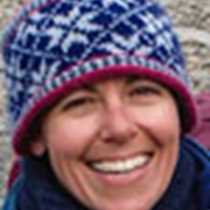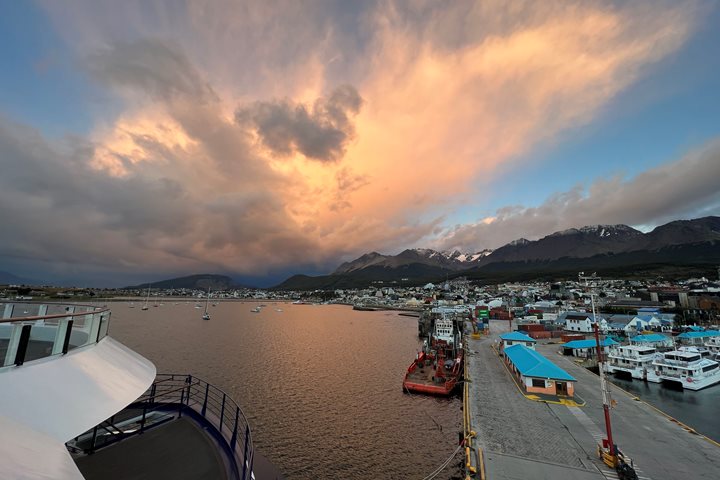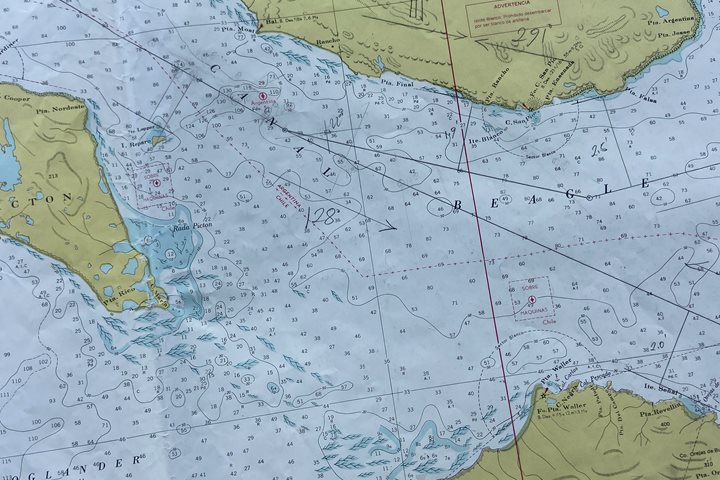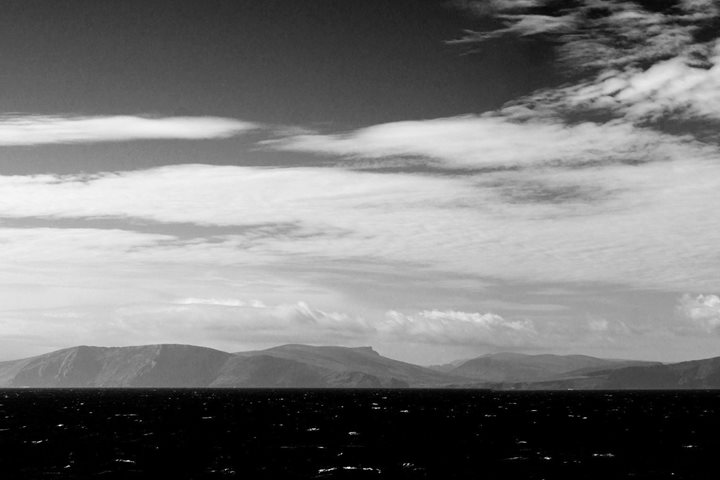Expedition leader Russ Evans delights in waking us early over the public address system. It's not always easy to rise, but with promises of beautiful light and stunning scenery, we pulled on our warm clothes and spent the early morning transiting north through the stunning Lemaire Channel. This well-known Antarctic attraction is seven miles long and one mile wide at its narrowest point and is lined by snow- and ice-covered peaks on both sides. The channel was first traversed in 1898 by the Belgian Antarctic expedition led by Belgian Adrien de Gerlache, and he allowed his crew to name two places each on the voyage. One crew member chose Charles Lemaire, who, in fact, had nothing to do with Antarctica—he actually led expeditions to the Congo.
We watched the light change from light purple to orange and then to bright white, a promising and excellent start to the day. We popped out of the channel, with brightness streaming through the pointy peaks at Cape Renard at the northern entrance.
Soon after, we arrived at Port Lockroy to pick up our guest speaker, Vicky, from the United Kingdom Antarctic Heritage Trust (UKAHT). Vicky is part of a five-person team working at this heritage site from October until early March. She told the story of the site's history, starting from its use in 1904 as a place of shelter for Jean-Baptiste Charcot's first French Antarctic expedition on Français, then as a protected anchorage by whalers for its proximity to fresh glacial water. The big story at Port Lockroy, though, is its nearly two decades as a British wartime and subsequently scientific station named Base A. The headquarters of Base A is the Bransfield House, which has been lovingly turned into a museum showcasing the lives of the five to nine men who spent close to two-and-a-half years here at a time. The museum is also home to a post office and gift shop.
The historic stories of Port Lockroy competed for our attention with an overwhelmingly interesting colony of gentoo penguins and numerous snowy sheathbills. The gentoo penguins were nearly at the end of their breeding cycle. Most of the penguin chicks here and at the adjacent Jougla Point on Wiencke Island were in different stages of their first molt from downy, fluffy feathers to their first adult plumage. The hairdos were tremendously entertaining, and some were still being fed by parents.
Under the deck, we found the annual sheathbill nest with dutiful parents regularly bringing back undigested krill from gentoo colonies to their offspring. The sheathbill chicks were also in the midst of their first molt, giving them a decidedly humorous appearance.
After departing Port Lockroy and sailing through another scenic passage, the 16-mile long Neumayer Channel, we entered the Gerlache Strait, where we promptly encountered more killer whales and humpback whales showing us their flukes in the sparkling sunshine. It was difficult to leave the outer decks, but a talk about Mount Everest expeditions by our Global Perspectives guest speaker, Peter Hillary, and National Geographic photographer, Tommy Heinrich, was an excellent way to end our fabulous day.







